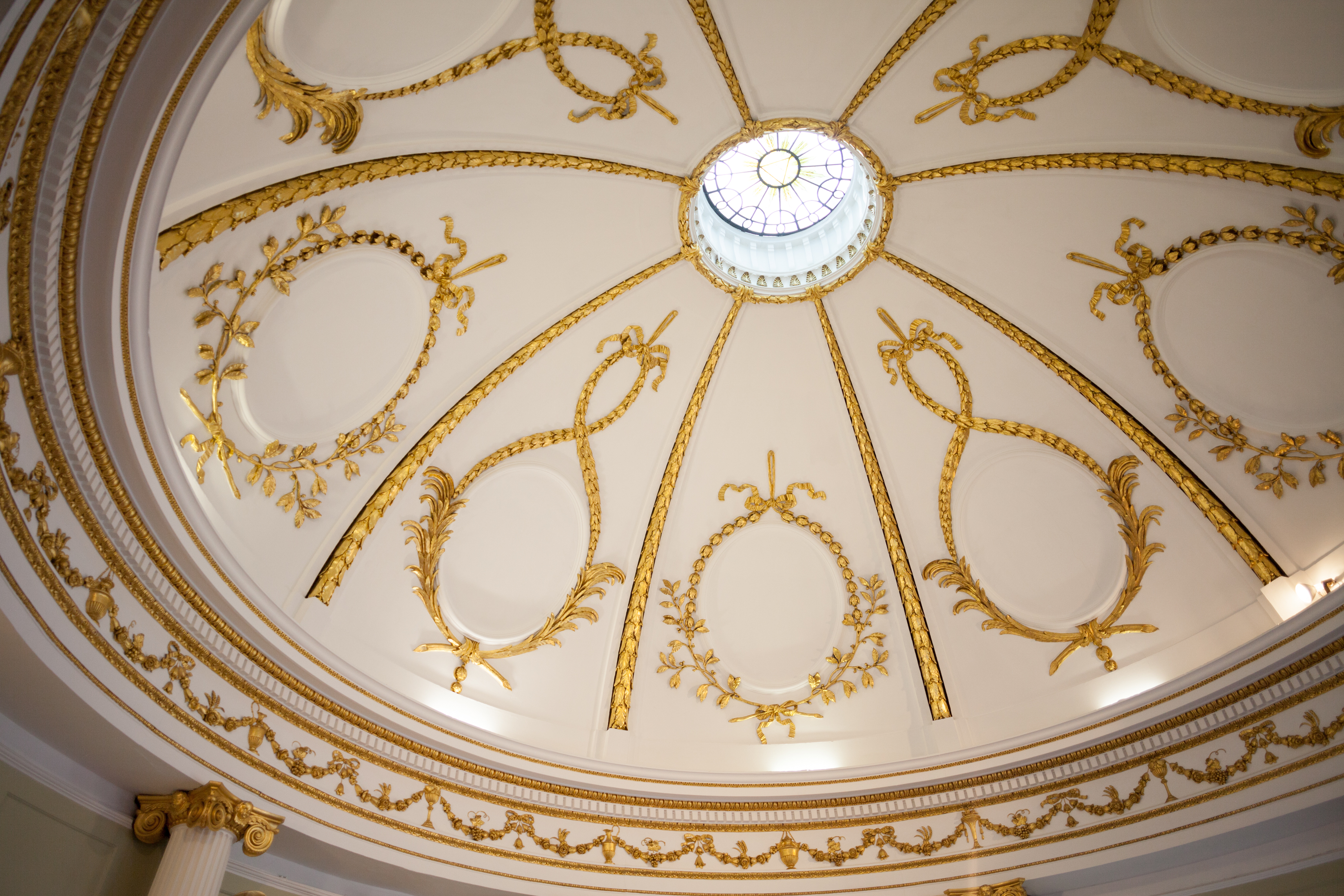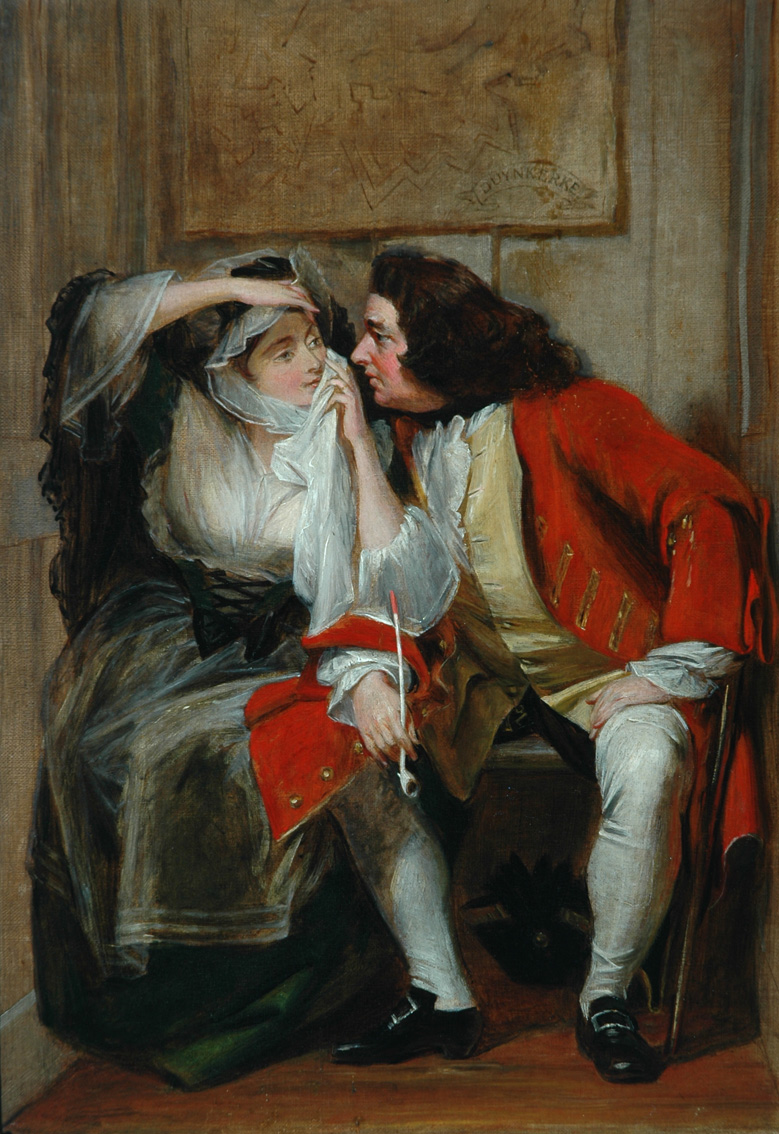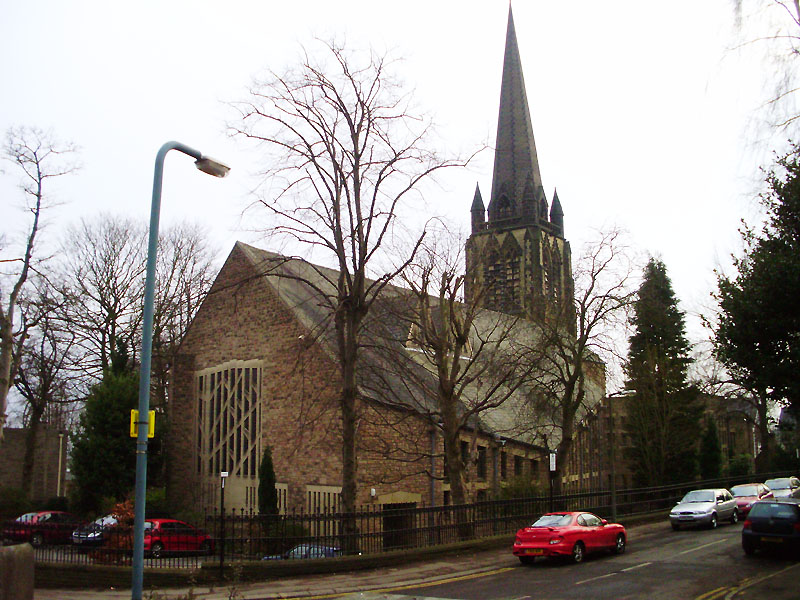|
Holy Trinity Church, Micklegate, York
Holy Trinity Church, Micklegate, York is a Grade I listed parish church in the Church of England in York. History The church was a Benedictine monastery founded in 1089 as Micklegate Priory, York by Ralph Paynel, and dedicated to the Holy Trinity. It fronted on Micklegate, in the city of York, England. It was under the care of the Benedictine Abbey of Marmoutier. The site had previously been used for Christ Church, a house of secular canons. The church dates from the 12th century with additions in the 13th and 14th centuries. The tower dates from 1453. The church was remodelled after the Dissolution of the Monasteries. The south aisle was rebuilt during a restoration between 1850 and 1851 by JB and W Atkinson of York. The body of the building was entirely re-pewed, and a new aisle, wide and was added on the south side, by opening the original arcades. The chancel and vestry were rebuilt between 1886 and 1887 by Fisher and Hepper. The chancel was rebuilt and was long ... [...More Info...] [...Related Items...] OR: [Wikipedia] [Google] [Baidu] |
York
York is a cathedral city in North Yorkshire, England, with Roman Britain, Roman origins, sited at the confluence of the rivers River Ouse, Yorkshire, Ouse and River Foss, Foss. It has many historic buildings and other structures, such as a York Minster, minster, York Castle, castle and York city walls, city walls, all of which are Listed building, Grade I listed. It is the largest settlement and the administrative centre of the wider City of York district. It is located north-east of Leeds, south of Newcastle upon Tyne and north of London. York's built-up area had a recorded population of 141,685 at the 2021 United Kingdom census, 2021 census. The city was founded under the name of Eboracum in AD 71. It then became the capital of Britannia Inferior, a province of the Roman Empire, and was later the capital of the kingdoms of Deira, Northumbria and Jórvík, Scandinavian York. In the England in the Middle Ages, Middle Ages it became the Province of York, northern England ... [...More Info...] [...Related Items...] OR: [Wikipedia] [Google] [Baidu] |
Norman And Beard
Norman and Beard were a pipe organ manufacturer based in Norwich from 1887 to 1916. History The origins of the company are from a business founded in Diss in 1870 by Ernest William Norman (1851–1927). In 1876 he moved to Norwich where he went into partnership with his brother, Herbert John Norman (1861–1936). In 1887 they went into partnership with George A. Wales Beard, and the company was formed. In 1896 the company opened a second office in London. They worked closely with Robert Hope-Jones and held the patents on many of his developments, including electro-pneumatic action. The company merged with William Hill & Sons of London in 1916, and became William Hill & Son & Norman & Beard Ltd. Organs * St. John's Church, Bangalore 1895 *Norwich Cathedral 1899 Retrieved 6 October 2011 (NPOR N06483) * Llandaff Cathedral 1900 (NPOR N11801) *Duke's Hall, Royal Academy of Music 1900 (NPOR D07229) *St Mary's Church, Oldswinford 1901 (NPOR N03681) * Our Lady Star of the Sea C ... [...More Info...] [...Related Items...] OR: [Wikipedia] [Google] [Baidu] |
Bar Convent
The Bar Convent Living Heritage Centre, at York, Micklegate Bar, York, England, established in 1686, is the oldest surviving Catholic Church, Catholic convent in the British Isles. The Penal law (British), laws of England at this time prohibited the foundation of Catholic convents and as a result of this, the convent was both established and operated in secret. While pretending to be widows, the foundation opened the first school for girls in the country in Hammersmith, London, in 1679 and the second here at the Bar Convent. Today, the Bar Convent is a popular York destination for tourists and offers bed and breakfast accommodation, meeting rooms, a gift shop, café and museum exhibition about the Convent's history. History Origin and early years After seeing the good work that the sisters were doing in London, Yorkshireman Sir Thomas Gascoigne, 2nd Baronet, Sir Thomas Gascoigne, a fervent Roman Catholic, approached Mother Frances Bedingfield and declared "we must have a sc ... [...More Info...] [...Related Items...] OR: [Wikipedia] [Google] [Baidu] |
The Life And Opinions Of Tristram Shandy, Gentleman
''The Life and Opinions of Tristram Shandy, Gentleman'', also known as ''Tristram Shandy'', is a humorous novel by Laurence Sterne. It was published in nine volumes, the first two appearing in 1759, and seven others following over the next seven years (vols. 3 and 4, 1761; vols. 5 and 6, 1762; vols. 7 and 8, 1765; vol. 9, 1767). It purports to be a biography of the eponymous character. Its style is marked by digression, double entendre, and graphic devices. The first edition was printed by Ann Ward (printer), Ann Ward on Coney Street, York. Sterne had read widely, which is reflected in ''Tristram Shandy''. Many of his similes, for instance, are reminiscent of the works of the metaphysical poets of the 17th century, and the novel as a whole, with its focus on the problems of language, has constant regard for John Locke's theories in ''An Essay Concerning Human Understanding''. Arthur Schopenhauer called ''Tristram Shandy'' one of "the four immortal romances".Arthur Schopenhauer, ... [...More Info...] [...Related Items...] OR: [Wikipedia] [Google] [Baidu] |
Laurence Sterne
Laurence Sterne (24 November 1713 – 18 March 1768) was an Anglo-Irish novelist and Anglican cleric. He is best known for his comic novels ''The Life and Opinions of Tristram Shandy, Gentleman'' (1759–1767) and ''A Sentimental Journey Through France and Italy'' (1768). Sterne grew up in a military family, travelling mainly in Ireland but briefly in England. He attended Jesus College, Cambridge on a sizarship, gaining bachelor's and master's degrees, and was ordained as a priest in 1738. While Vicar of Sutton-on-the-Forest, Yorkshire, he married Elizabeth Lumley in 1741. He briefly wrote political propaganda for the Whigs, but abandoned politics in 1742. In 1759, he wrote an ecclesiastical satire '' A Political Romance'', which embarrassed the church and was burned. Having discovered his talent for comedy, at age 46 he dedicated himself to humour writing as a vocation. Also in 1759, he published the first volume of ''Tristram Shandy'', which was an enormous success and co ... [...More Info...] [...Related Items...] OR: [Wikipedia] [Google] [Baidu] |
Doctor Slop
Dr Slop is a choleric physician and "man-midwife" in Laurence Sterne's novel ''The Life and Opinions of Tristram Shandy, Gentleman'' (1759). The doctor is summoned by Tristram Shandy's father to attend his son's imminent birth. Slop makes his first appearance in Chapter 34 of the novel, where he is described as: :"... a little squat, uncourtly figure ... about four feet and a half perpendicular height, with a breadth of back, and a sesquipedality of belly, which might have done honour to a serjeant in the horse-guards." He is portrayed as an incompetent quack, arriving at Shandy Hall having forgotten his array of "vile instruments" and "obstetrical engines", which have to be urgently sent for. In performing a forceps delivery of the baby, Slop damages the infant Tristram's nose, much to his father's consternation, and is obliged to perform a rudimentary rhinoplasty using cotton thread and a piece of whalebone from a maid's corset. Sterne partially based the character of Slop on J ... [...More Info...] [...Related Items...] OR: [Wikipedia] [Google] [Baidu] |
John Burton (antiquary)
John Burton, M.D. (1710–1771) was an English physician and antiquary. Early life Burton was born at Colchester in 1710, and was educated at Merchant Taylors' School, London (1725–6), and at St John's College, Cambridge, where he was admitted in 1727 and graduated M.B. in 1733. In 1734 he was practising medicine at Heath, on the outskirts of Wakefield. He was a good Greek and Latin scholar, and attained no little eminence in his profession both in the city and county of York. Already displaying the strong support for the Tory party that he maintained throughout his life, Burton was vigorous on his party's behalf during the bitterly contested county election of 1734. His activities badly affected the success of the Whig interest in York, personified in the prominent local clergyman, the Rev. Dr Jaques Sterne. This sowed the seeds of the animosity between the two men that was to bedevil Burton for some years to come. On 2 January 1735, in York Minster, Burton married Mary (c.17 ... [...More Info...] [...Related Items...] OR: [Wikipedia] [Google] [Baidu] |
George Pace
George Gaze Pace, (31 December 1915 – 23 August 1975) was an English architect who specialised in ecclesiastical works. He was trained in London, and served in the army, before being appointed as surveyor to a number of cathedrals. Most of his work was carried out on churches, although he did some secular work. His architectural style was Modernist, but he respected traditional styles, and on occasions combined both styles in his works. Early life and training George Pace was born in Croydon, Surrey, the son of a ship owner's clerk. He was educated at Addiscombe New College, and then became articled to James Ransome and Cootes in London. He studied in the evenings at Regent Street Polytechnic. Then went on to work with Darcy Braddell and Humphrey Deane, and then with Pite, Son, and Fairweather. During this time he won prizes, including the Pugin scholarship. After qualifying as an architect in 1939, he taught at the polytechnic, but in 1941 he was called up for a ... [...More Info...] [...Related Items...] OR: [Wikipedia] [Google] [Baidu] |
John Ward Knowles
John Ward Knowles (1838–1931) was a prominent British York-based stained-glass manufacturer, and commentator on local art and music. Family Knowles may have been related to the civil engineer George Knowles (c. 1776-1856june23: will 1856aug13ref PROB 11/2237/206), who designed Scarborough's spa promenade and South Cliff Gardens. His brother was William Knowles (1846nov3-1908sep7). His son John Alder Knowles (1881-1961) continued the craft traditions but also moved with the times. He spent some time studying glass manufacturing methods in the USA before the First World War. Enthused by the work of Tiffany, he attempted an English version of the famous lamps, but charming though his prototypes were, they lacked the delicacy of the originals and failed to catch on. Career After training in art, Knowles dabbled in photography. In 1869 John Ward Knowles took the premises at No.41, (The Star Inn) previously the house of Mr Robinson, Hosier. According to his notes he moved there in 186 ... [...More Info...] [...Related Items...] OR: [Wikipedia] [Google] [Baidu] |
Charles Eamer Kempe
Charles Eamer Kempe (29 June 1837 – 29 April 1907) was a British Victorian era designer and manufacturer of stained glass. His studios produced over 4,000 windows and also designs for altars and altar frontals, furniture and furnishings, lychgates and memorials that helped to define a later nineteenth-century Anglican style. The list of English cathedrals containing examples of his work includes: Chester Cathedral, Chester, Gloucester Cathedral, Gloucester, Hereford Cathedral, Hereford, Lichfield Cathedral, Lichfield, Wells Cathedral, Wells, Winchester Cathedral, Winchester and York Minster, York. Kempe's networks of patrons and influence stretched from the Royal Family and the Church of England hierarchy to the literary and artistic beau monde. Early life Charles Kempe was born at Ovingdean Hall, near Brighton, East Sussex in 1837. He was the youngest son of Nathaniel Kemp (1759–1843), a cousin of Thomas Read Kemp, a politician and property developer responsible for the K ... [...More Info...] [...Related Items...] OR: [Wikipedia] [Google] [Baidu] |
Jacobs Well, York
Jacobs Well is a mediaeval Grade I listed building in the Micklegate area of York, England. It is the church hall of Holy Trinity, Micklegate. Architecture The building was originally a hall house, consisting of a hall rising the full two-story building, with a wing at the east end. It may have had a matching wing at the west end, but no evidence survives. The house is timber-framed, with the ground floor infilled with Mediaeval brick. Its upper floor is jettied. Its main entrance has a 15th-century canopy. The roof is of crown post construction, the roof in the wing being a reconstruction. The building is named after the Well of Sychar, or more commonly, Jacob's Well where Jesus is said to have spoken to a Samaritan woman. History The origin of the building is not known with certainty, but its current custodians claim that it was built in about 1474 as lodgings for a chantry priest based at neighbouring Holy Trinity Priory. The construction was funded by Thomas Nel ... [...More Info...] [...Related Items...] OR: [Wikipedia] [Google] [Baidu] |





